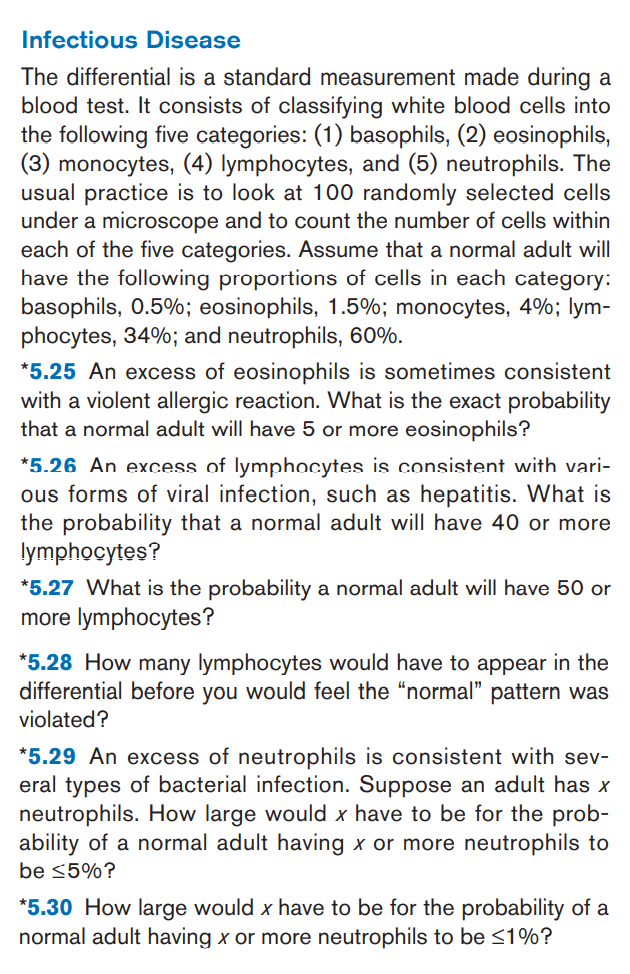The differential is a standard measurement made during a blood test. It consists of classifying white blood cells into the following five categories: (1) basophils, (2) eosinophils, (2) ile Th
The differential is a standard measurement made during a blood test. It consists of classifying white blood cells into the following five categories: (1) basophils, (2) eosinophils, (2) ile Th
Big Ideas Math A Bridge To Success Algebra 1: Student Edition 2015
1st Edition
ISBN:9781680331141
Author:HOUGHTON MIFFLIN HARCOURT
Publisher:HOUGHTON MIFFLIN HARCOURT
Chapter11: Data Analysis And Displays
Section: Chapter Questions
Problem 10CT
Related questions
Question
Can I ask for a manual solution to this, without the use of excel?
please make it comprehensive so that I can learn, thank you.

Transcribed Image Text:Infectious Disease
The differential is a standard measurement made during a
blood test. It consists of classifying white blood cells into
the following five categories: (1) basophils, (2) eosinophils,
(3) monocytes, (4) lymphocytes, and (5) neutrophils. The
usual practice is to look at 100 randomly selected cells
under a microscope and to count the number of cells within
each of the five categories. Assume that a normal adult will
have the following proportions of cells in each category:
basophils, 0.5%; eosinophils, 1.5%; monocytes, 4%; lym-
phocytes, 34%; and neutrophils, 60%.
*5.25 An excess of eosinophils is sometimes consistent
with a violent allergic reaction. What is the exact probability
that a normal adult will have 5 or more eosinophils?
*5.26 An excess of lymphocytes is consistent with vari-
ous forms of viral infection, such as hepatitis. What is
the probability that a normal adult will have 40 or more
lymphocytes?
*5.27 What is the probability a normal adult will have 50 or
more lymphocytes?
*5.28 How many lymphocytes would have to appear in the
differential before you would feel the "normal" pattern was
violated?
*5.29 An excess of neutrophils is consistent with sev-
eral types of bacterial infection. Suppose an adult has x
neutrophils. How large would x have to be for the prob-
ability of a normal adult having x or more neutrophils to
be 55%?
*5.30 How large would x have to be for the probability of a
normal adult having x or more neutrophils to be <1%?
Expert Solution
This question has been solved!
Explore an expertly crafted, step-by-step solution for a thorough understanding of key concepts.
This is a popular solution!
Trending now
This is a popular solution!
Step by step
Solved in 3 steps

Recommended textbooks for you

Big Ideas Math A Bridge To Success Algebra 1: Stu…
Algebra
ISBN:
9781680331141
Author:
HOUGHTON MIFFLIN HARCOURT
Publisher:
Houghton Mifflin Harcourt

Big Ideas Math A Bridge To Success Algebra 1: Stu…
Algebra
ISBN:
9781680331141
Author:
HOUGHTON MIFFLIN HARCOURT
Publisher:
Houghton Mifflin Harcourt